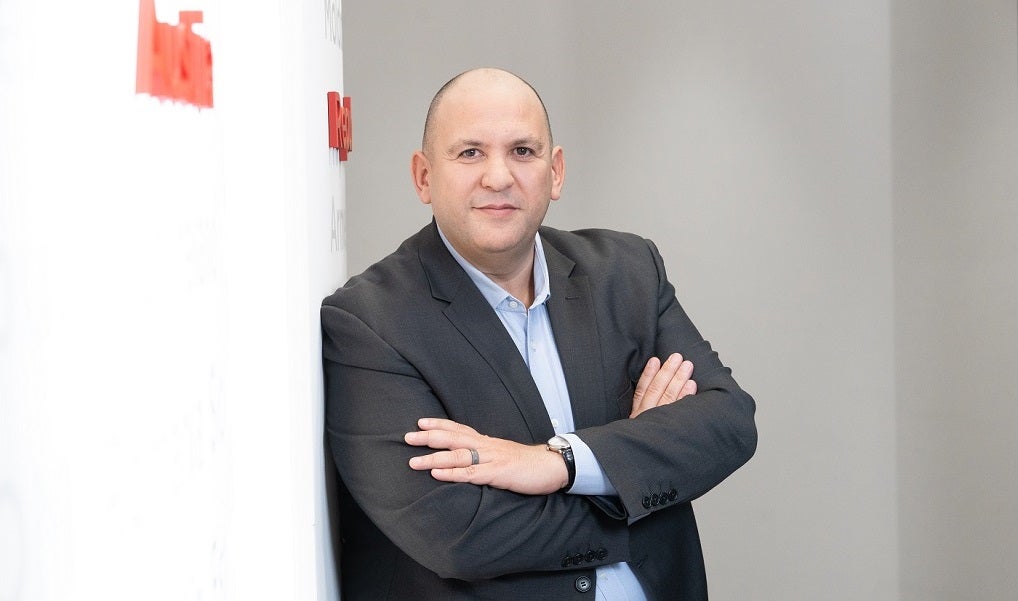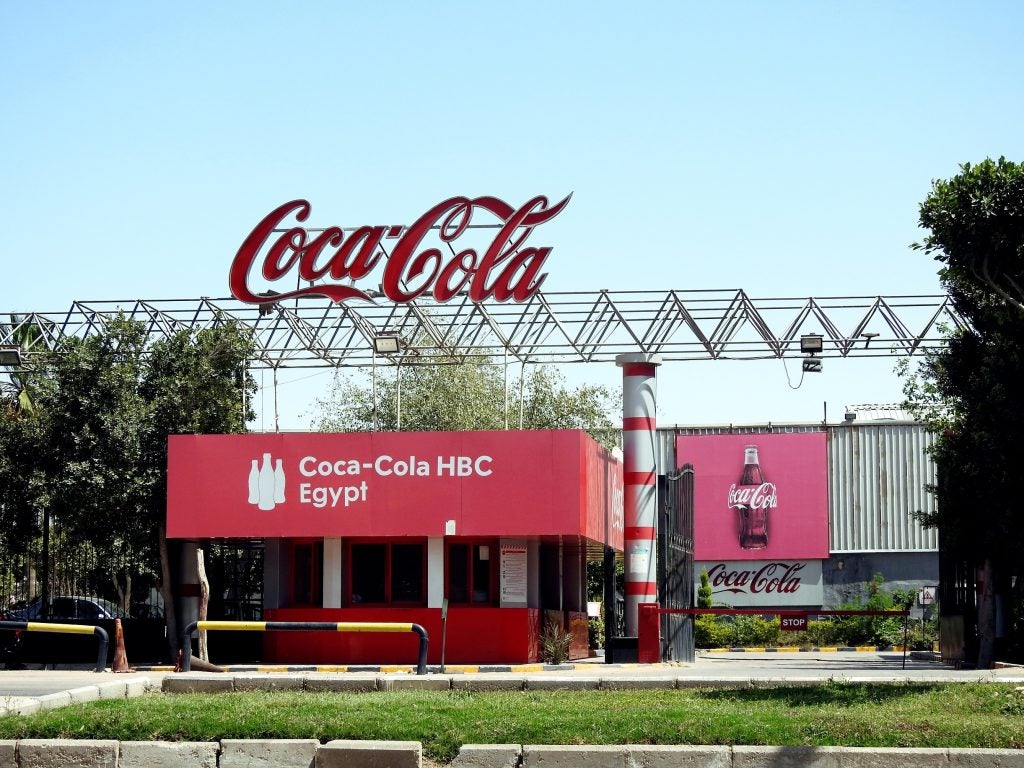
Coca-Cola HBC, a major bottler working in 29 countries in Europe and Africa with The Coca-Cola Company, has been looking to optimise its operations and make its business more sustainable through investment in technology.
The group has recently partnered with Microsoft to improve its operations, using tech from smart glasses to digital twins.
Speaking to Just Drinks, Coca-Cola HBC chief digital and technology officer Mourad Ajarti breaks down the intricacies of striving for streamlining, the regulatory challenges of generative AI and how he sees today as an “iPhone moment”.
Just Drinks: How has the digital and technology department at Coca-Cola HBC changed in recent years?
Mourad Ajarti: As I came in, maybe four or five years ago, the mandate I had was: how can we make the acceleration of growth and leverage digital data technology in a way that delivers a business transformation but really focused on business outcomes?
The business outcomes we set at that time were firstly customer centricity – the ability to execute in a very personalised way for every outlet that we visit. The second outcome is really around employee experience. How could we make Coca-Cola Hellenic a digital-first workplace for everybody, with access to technology and stuff?
The third is all around operational productivity: how we can do stuff faster, better, maybe cheaper, as well. And fourth, very important to us as well, is the focus of sustainability. How can technology play a role to make us even more sustainable as a company?

US Tariffs are shifting - will you react or anticipate?
Don’t let policy changes catch you off guard. Stay proactive with real-time data and expert analysis.
By GlobalDataIf I look into my function, we’ve been through a complete transformation. Starting from the name: in the past we would be known as the BSS (business services and solutions). Today we are known as digital technology, platforms and solutions. The focus has been how could we organise around the outcomes. I have three platforms – customer, employee and enterprise. How do we leverage data cybersecurity and the foundation infrastructure in order to deliver the information I just explained before?
The main change we have gone through as a function is to move from what I call a “traditional IT organisation” into a product-led organisation adopting fully agile ways of working. We manage around 20 digital projects, between customer, employee, enterprise, infrastructure, data. Across all of those, we are organised as a DevOps team to have faster time to market, more secure solutions, more scale when it comes to products that make it to our 29 markets where we operate.
Just Drinks: Looking at “customer centricity” and personalisation, how has artificial intelligence been used in that regard?
Ajarti: If I talk about AI as traditional AI or narrow AI, as we knew it in the past, Coca-Cola Hellenic has been scaling solutions with embedded AI for the last four or five years. For example, in the past, a sales rep will go in and do execution audits on how the shelf is looking, how the cooler is looking, either based on paper or an iPad survey that we will fill on the spot.
Today, we do all of that with image recognition. With computer vision, you just take your photo with the mobile while the sales rep is still in the outlet. He or she gets a score of the execution in that outlet so they can still take action while they are still in-store.
Just Drinks: Would you say optimisation is more of a priority than standardisation at this moment?
Ajarti: We have a nice balance between looking for optimisation and standardisation – but doing it in a way that is relevant in the markets. That’s a fine line and we go through that fine line almost in every capability. We will only launch in-market if that product we’ve created is actually relevant and is delivering something of positive value in that market. It’s starting from a mindset of again efficiency and productivity.
If I use the case of image recognition, we have it across all our markets. Around 60/70% of all the visits that take place happen with the image recognition capability. Signature execution as I talked about, we have it in all 29 markets. The iPad every sales rep has with the ability to get things such as audits and taking orders online.
Just Drinks: Is Coca-Cola HBC using AI further down the supply chain, in areas such as NPD, advertising and marketing?
Ajarti: We see AI in three big areas. One is automation. Second is what we talked about before which is augmentation. The third is on how to market potential value.
If I give an example away from traditional AI and look at GenAI (generative AI), it is pretty new for us. We are doing some cool innovation with Microsoft around digital twin capabilities. Digital twins is this ability to take data from sensors in production markets and recreate that representation of the physical production line in the virtual world. You have the ability to use that to simulate changes of configuration, changes of parameters before deciding on which scenario you would actually implement on the physical line. We have that in our facility in Austria up and running. We have planned to take it to more than 50 lines across our company.

In that core innovation with Microsoft, we’ve embedded for a few months now the OpenAI capabilities. The first use case we’ve been focused on is energy consumption. Through that digital twin ability, we can see what the sensors in real-time are doing. In the space of 12 months, with a prototype in one line, we were able to deliver 90% of energy savings in that specific line. That’s using digital twin capabilities, sensors, even some narrow AI when it comes to modelling so we can understand from the data if there are any correlations.
And then on top of that, GenAI that teaches a bit of the experience of a given shopfloor individual to converse through natural language with that model moving forwards.
Just Drinks: What are your plans with Microsoft for the next 18 months or so?
Ajarti: We have a plan that we are executing against to get into 50-plus lines by 2027, applying exactly the same digital twin technology and AI technology on top of every line that we have. We are talking energy efficiency, water efficiency, changeover efficiency, in a way that not only delivers productivity from an operation point of view but also sustainability because we are cutting the usage of energy, we are cutting the usage of water.
Now there are challenges, of course, because to get to that level of the added value of AI, modelling, digital twins and all these things, it goes through the hard work of making sure that your lines have the right sensors, that the data from sensors are clean, that they are coming back and accessible et cetera. So that’s why sometimes you hear “I have a plan from 2020 to 2027” because it’s really hard work to go line by line. Some lines are new, they come with sensors, or they are a little bit old, a few years old, and may not have the sensors and you have to refit them.
Just Drinks: What are the main challenges Coca-Cola HBC is facing with AI?
Mourad Ajarti: For a good AI model to work, you need really good data. That’s for me the number one challenge: how do you create your supply chain of data that is accurate and substantial enough for the model to work? That’s the heavy lifting we have to do on every one of these use cases. I talked about the supply chain case with the sensors but, with the image recognition case, getting to a model that actually recognised all our brands accurately in every market with every language and every package size, takes three or four months for every market to actually get through that learning to adoption.
The challenge with GenAI is it’s an area which is not well regulated yet.
I think more with GenAI as we embark on it now, the challenge and the concern that we had is it’s an area which is not well regulated yet. We have to balance between, what I call, the rush for exploration, for learning, for prototyping, while keeping a good framework that makes us create ‘responsible AI’.
In our case, we do two things. One is we already use what’s called cyber regulation, privacy regulation – for us to have a safety net of what we do with AI, by applying to AI what we apply to any other digital tools that we create.
But at the same time, the way for example we’re engaging in AI is we are getting a multifunctional team – not only a technical team but commercial team, finance team supply chain team – together with lawyers, people from cybersecurity, the data privacy officer, for them to look at it from different angles to make sure we are delivering a solution that we call “responsible AI” before the regulation comes in.
Also, the US has pushed a big play on new regulation. The EU is working on a draft regulation that should be coming live around 2026/2027. But we cannot wait for that. I think as good companies, as citizen companies, we have to do the right thing. I do believe personally we can be pragmatic about it with all the framework we have around security, around pricing and having the right eyes around the table when we are experimenting and prototyping.
Just Drinks: Looking at the drinks industry, do you think AI will grow in importance in the next five years?
Ajarti: It will be a growing adoption. It’s an opportunity that is available for us all. I think all humans will start engaging with it the same way we started engaging with a mobile phone or with an email in the past. I really see it as almost like an iPhone moment. I think that’s something we cannot stop and we should not stop because there is opportunity in various ways.
Specifically for the drinks sphere as a whole, I don’t think we will go beyond what I’ve laid out as the digital transformation outcome that we want. In other words, leveraging AI to drive customer centricity, leveraging AI to deliver a better employee experience, leveraging AI to drive operational productivity, leveraging AI to drive sustainability, execution and insight. I don’t think the AI part will change what we already are working on as part of digital transformation from an outcome point of view.
I think where we need to be careful and really go the extra mile is how can we integrate different experiences we are creating around AI but we are experimenting now in something that is more seamless for our consumers and our employees. So far, there is a lot of experimentation of different things but I think the winners will be the ones who are able to create seamless experiences that make it simpler for people to interact with you as a provider, as a partner and as a company.



